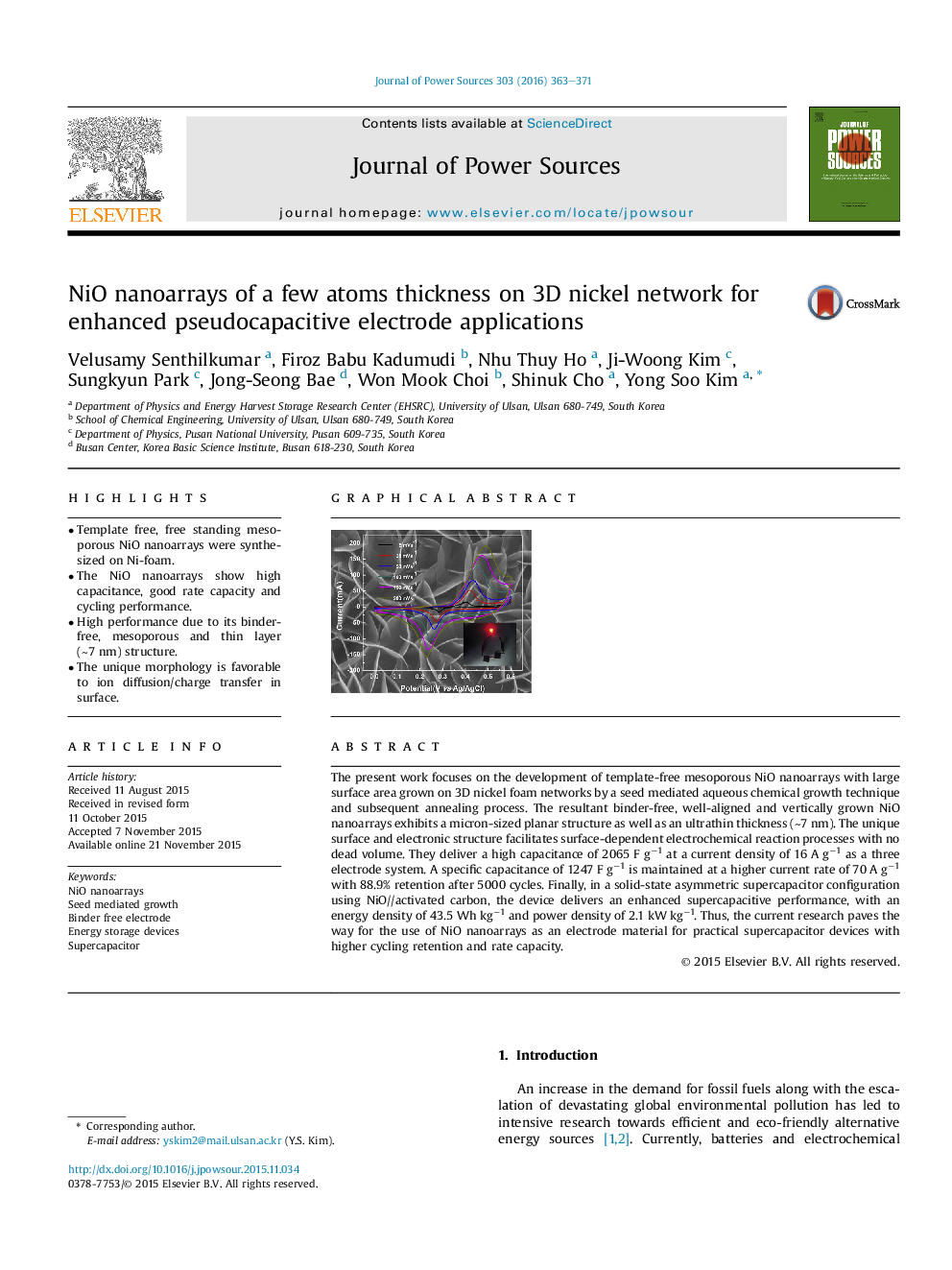| Article ID | Journal | Published Year | Pages | File Type |
|---|---|---|---|---|
| 1285756 | Journal of Power Sources | 2016 | 9 Pages |
•Template free, free standing mesoporous NiO nanoarrays were synthesized on Ni-foam.•The NiO nanoarrays show high capacitance, good rate capacity and cycling performance.•High performance due to its binder-free, mesoporous and thin layer (∼7 nm) structure.•The unique morphology is favorable to ion diffusion/charge transfer in surface.
The present work focuses on the development of template-free mesoporous NiO nanoarrays with large surface area grown on 3D nickel foam networks by a seed mediated aqueous chemical growth technique and subsequent annealing process. The resultant binder-free, well-aligned and vertically grown NiO nanoarrays exhibits a micron-sized planar structure as well as an ultrathin thickness (∼7 nm). The unique surface and electronic structure facilitates surface-dependent electrochemical reaction processes with no dead volume. They deliver a high capacitance of 2065 F g−1 at a current density of 16 A g−1 as a three electrode system. A specific capacitance of 1247 F g−1 is maintained at a higher current rate of 70 A g−1 with 88.9% retention after 5000 cycles. Finally, in a solid-state asymmetric supercapacitor configuration using NiO//activated carbon, the device delivers an enhanced supercapacitive performance, with an energy density of 43.5 Wh kg−1 and power density of 2.1 kW kg−1. Thus, the current research paves the way for the use of NiO nanoarrays as an electrode material for practical supercapacitor devices with higher cycling retention and rate capacity.
Graphical abstractA high capacitance and cycling retention of few atomic thicknesses NiO nanoarrays electrode is reported. This superior behavior is attributed to its binder-free structure, mesoporous nature, ultrathin layer (∼7 nm) and micro-sized lateral area. Further, high energy density and moderate power density is observed in solid state asymmetric supercapacitor, thus making NiO nanoarrays a potential candidature for practical supercapacitor device applications.Figure optionsDownload full-size imageDownload as PowerPoint slide
